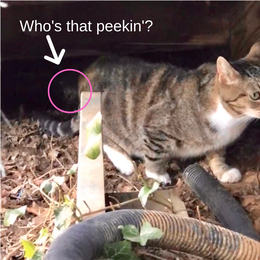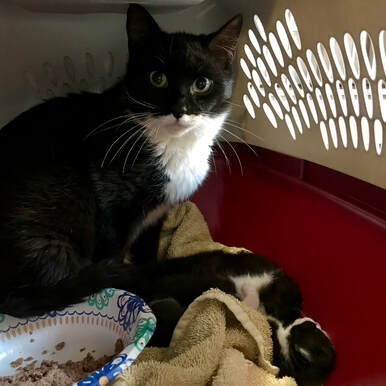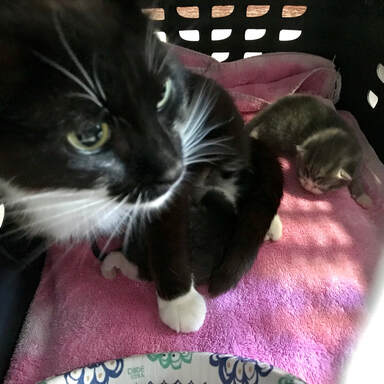|
We’re tackling the challenges of Kitten Season right now on both coasts. Our Los Angeles team recently found another (yes, ANOTHER) family of nursing kittens on a rooftop, while our Maryland staff have worked hard to get single moms and their kittens out of area municipal shelters. Cats can reproduce quickly and this is what leads to the shelter overcrowding, and euthanasia, that ACR works so hard to prevent. Kind and compassionate people gather up these young cat families and bring them to open-intake shelters, assuming that this is the best thing to do for them. Of course, municipal shelters always have limited space, time, and resources. Despite long hours and their best efforts, staff are frequently forced to make that most difficult of decisions, about who can be cared for and who cannot. Impossible Choices Cats who need more than a basic level of care and assistance are most often the unlucky ones; cats with injuries, infections and behavioral issues fit the bill, as well as kittens under eight weeks old. These are all cats who need a place and extra time and care to heal, grow, or socialize. Unfortunately, because there are so many new arrivals each day, shelters are not able to provide what these cats, who are the most in need, require. The root of this problem is unchecked reproduction. Unsterilized, free-roaming cats produce 80% of the kittens entering shelters each year. While the vast majority of indoor-living cats are spayed or neutered, only 2% of cats who live outside are sterilized.
 Sterilize Today to Avoid Euthanizing Tomorrow The best way to tackle these problems is by spaying and neutering outdoor cats. The phrase Kitten Season always brings “kitten rescue” to mind, but the most effective process for lowering the euthanasia rate and saving more lives actually begins before kittens are even born. Trap-Neuter-Return (TNR) specifically targets unsterilized outdoor cats, the population with the lowest rate of spay/neuter and highest contribution to the kitten population. When these cats are sterilized, reproduction stops and they become much less likely to engage in nuisance and territorial behaviors. Spay or neuter, especially when done early in life, are also effective ways to protect cats from cancers of the reproductive organs. After these free-roaming cats are sterilized and vaccinated, they’re returned to the outdoor homes they prefer, where a caregiver provides shelter and daily fresh water and food. Being “returned” also means they take up no additional cage space or shelter staff time, leaving those resources available for the daily arrival of other cats in need. But, what about those month-old kittens found with mom in the backyard? The truth is, a kitten is best off with her mother until she is weaned, around eight weeks-of-age. Despite the inherent challenges of outdoor life, the nutrition and guidance that mother cats provide is almost always superior to what a human can do with foster care. When mother cats with kittens are discovered in a safe place outside and all appear healthy, the best thing to do is provide close supervision while creating a plan and preparing to have each sterilized and adopted or returned. While we’re drawn to new kittens and doing everything we can to enable their young lives, we must never forget about the parents. If we rescue three kittens but don’t address mom (and dad), in short order there will likely be three new kittens in the same spot needing rescue once again. Free-roaming adult cats are just as deserving of quality treatment and care as kittens, and each time we act to keep them from reproducing and out of the shelter themselves, we create the opportunity to help a cat or kitten who’s already here.
1 Comment
|
Details
AuthorAlley Cat Rescue is leading in the way in promoting humane and compassionate care for ALL cats. Archives
April 2024
Categories
All
|



 RSS Feed
RSS Feed